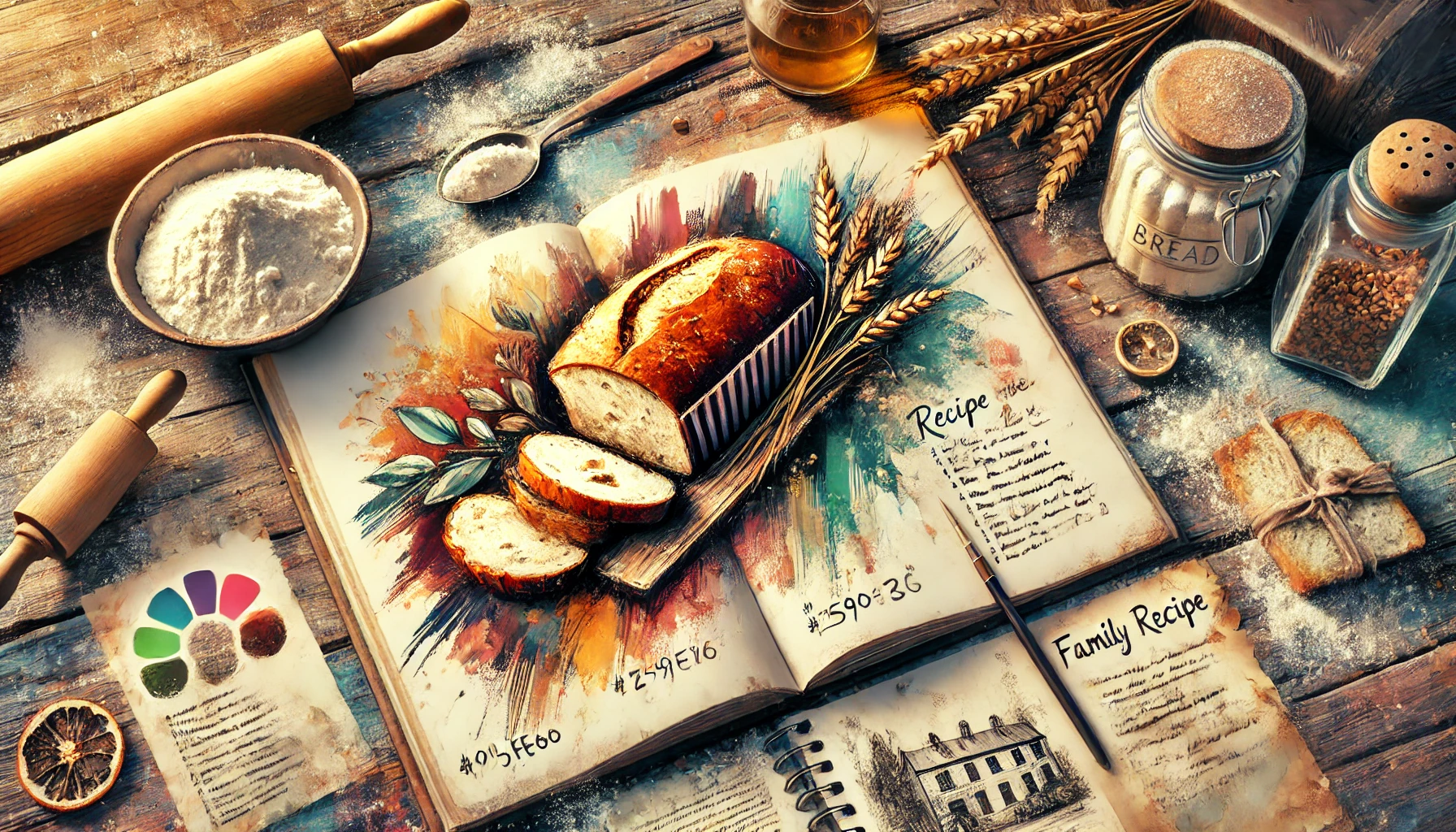Creative Ways to Use Notebooks for Recipe Keeping
In the digital age, where recipes are often bookmarked or saved in apps, there’s something uniquely satisfying about writing down your favourite recipes in a beautifully designed notebook, journal, or scrapbook. Whether you’re an avid home baker, a cooking enthusiast, or someone who loves preserving family traditions, having a dedicated space for your culinary adventures can be both practical and sentimental.
If you love baking bread, collecting recipes, or recording kitchen experiments, here are creative ways to use notebooks, journals, and scrapbooks for recipe keeping.
-
Personalised Recipe Notebook for Your Bread Creations
A dedicated bread recipe notebook is perfect for recording your favourite bread recipes, ingredient tweaks, and baking techniques. Whether you’re making sourdough, whole wheat, or artisan bread, a structured notebook helps keep everything organised. You can create sections for different bread types, track baking times, and note down fermentation techniques.
For extra organisation, consider using a notebook with blank pages for sketches of your loaves, a lined journal for detailed instructions, or a bullet journal with customizable spreads for quick notes and adjustments.
-
A Cooking Journal for Experimentation
If you love experimenting in the kitchen, a cooking journal is your best friend. Keep a log of your trials and errors, jot down ingredient substitutions, and rate each dish for future reference. A guided journal with pre-designed recipe pages can help you structure your notes with sections for ingredients, cooking times, and final results.
A cooking journal is handy if you’re perfecting your baking techniques. Keep track of dough hydration levels, proofing times, and oven temperatures to refine your bread-making skills over time.
-
A Family Recipe Scrapbook for Generational Traditions
Cooking is often a cherished tradition passed down through generations. A family recipe scrapbook allows you to preserve handwritten recipes from your grandmother, mother, or even your own creations. Use decorative elements, such as recipe cards, photos, and handwritten notes, to add a personal touch.
You can also include stories about the origins of each recipe, special occasions when it was made, and memories associated with it. This turns your scrapbook into a treasured family heirloom that can be passed down for years to come.
-
Themed Recipe Notebooks for Specific Cuisines
Instead of keeping all recipes in one place, consider having themed recipe notebooks. You could have one dedicated to bread recipes, another for desserts, and a separate journal for savoury dishes. This makes it easier to find recipes when you need them.
For bakers, a dedicated bread-making journal can be a valuable tool for tracking variations of the same recipe. Keep a record of different flours, hydration percentages, and fermentation times to perfect your favourite loaves.
-
A Meal Planning Journal for Weekly Cooking
A meal planning journal helps organise your weekly meals, grocery lists, and meal prep strategies. You can dedicate a section to listing your go-to recipes and jot down quick notes about any modifications you make. If you frequently bake bread, use your journal to plan baking days and coordinate meals around freshly baked loaves.
-
A Food Photography Journal for Visual Inspiration
If you enjoy food photography, keeping a food photography journal can help you improve your skills by recording lighting setups, camera settings, and plating ideas. Attach printed photos of your dishes alongside the recipes to create a beautiful visual record of your culinary journey.
Using notebooks, journals, and scrapbooks for recipe keeping adds a personal touch to your cooking and baking experiences. Whether you’re preserving family traditions, perfecting your bread recipes, or organising your weekly meals, a well-kept recipe journal makes your culinary journey more meaningful.
If you’re looking for beautifully designed recipe notebooks, journals, or scrapbooks, here are some ideas to explore.

